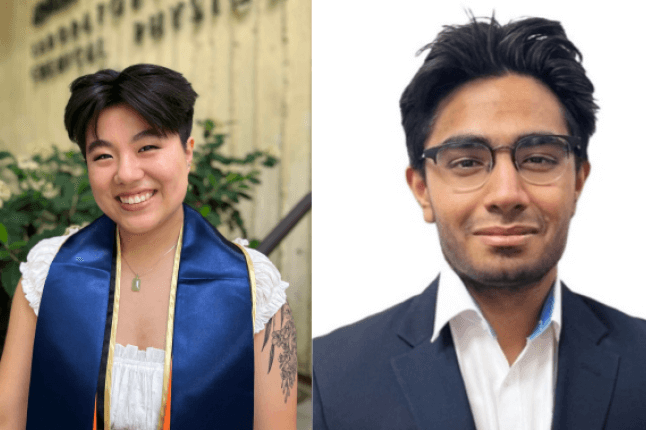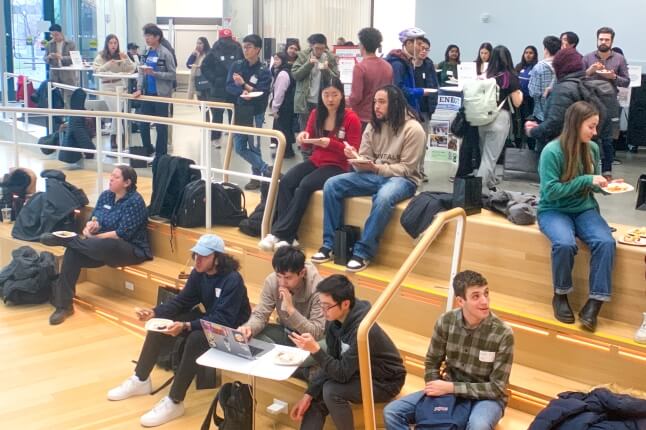News
Drag race teaches students principles of physics and mechanics
As engineering students, sometimes homework has equations, sometimes it has code, but the very best homework has wheels. That’s what the students in Physics as a Foundation for Science and Engineering (AP 50) learned as they worked in teams to build a racecar from elastic bands, balloons, weights, springs, and mousetraps by applying the physics and mechanics concepts taught in class.
The Harvard John A. Paulson School of Engineering and Applied Sciences course draws students across multiple concentrations and backgrounds to learn how to apply both physics and design concepts as they build a series of collaborative projects. Elizabeth Herington, A.B. ‘20, an economics concentrator, worked in a group called “Two Fast Two Furious.”
“I learned not to be afraid to start over. I’ve never done engineering before, so when it worked, it was really exciting,” she said.
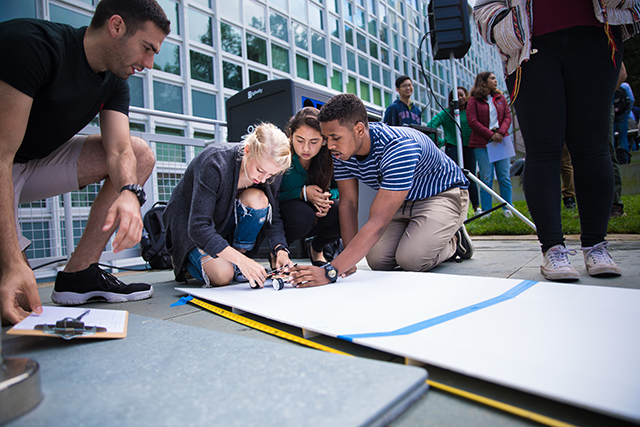
Team members make final adjustments to their car before the drag race begins. Fourteen teams took part in the annual event. (Photo by Annie Schugart/SEAS Communications)
The project encouraged students to fine-tune their understanding of mechanics. Alyssa Panton, A.B. ‘21, a psychology concentrator, found that the “most interesting part is that you can change the minuscule details like the direction and rubber bands used, and it’ll change the turnout of the car.”
As a teaching fellow and third-year Ph.D. candidate in the Graduate School of Education, Isaura J. Gallegos admired students’ dedication as they worked on improving their projects.
“Something that’s really wonderful about this class is that students will go above and beyond to keep working on their model even outside of class, which is really exciting from a teaching perspective,” she said. “We hope they develop collaborative and social skills, too.”
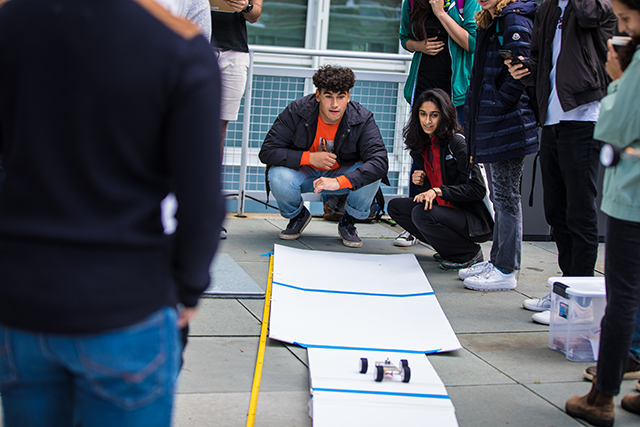
Team members watch as their racecar careens down the track. (Photo by Annie Schugart/SEAS Communications)
Grace Matthews, A.B. ‘21, a biomedical engineering concentrator, shared some of the additional social skills she and her teammates learned.
“The most challenging part was trying to find time to coordinate. It’s an important life skill,” she said. “The group project was my favorite part. Everyone had different strengths. When one person made a great observation about the design, another person built on that idea.”
Abdeljaleel Ismail, S.B. ‘21, a bioengineering concentrator, agreed.
“Teamwork and communication was the greatest strength of our project,” he said.
As Carmella Verrastro, A.B. ‘19, a history and science concentrator said, “Teamwork makes the dream work.”
When it came time to test the cars, each team launched the product of their hard work down the track. On their very first try, one of the teams cheered as their car went so far it ran out of track. As course assistants rushed to tape down some more track, Cassandra Pasadyn, A.B. ‘21, an integrative biology concentrator, celebrated the happy surprise with her teammates.
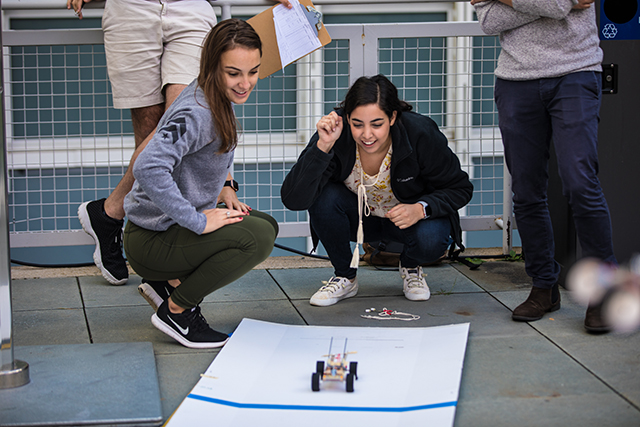
Students celebrate the successful launch of their racecare. (Photo by Annie Schugart/SEAS Communications)
“We’re one of the only all-girl teams, so we called ourselves the Powerpuff Girls. Power to us!” she said.
After racing their cars on the tracks, the teams presented their projects to panels of judges, explaining the physics and mechanics at work behind the design choices they made.
For these students, understanding the concepts deeply and working hard to apply them together made for a great formula for some Formula One racing.
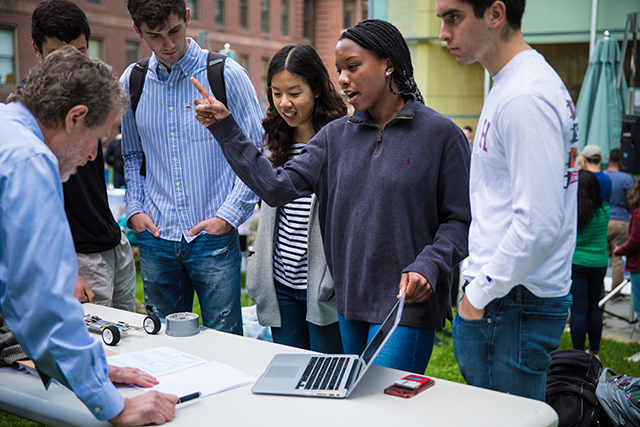
A student explains some of the scientific principles at work in her team's car to a panel of judges. (Photo by Annie Schugart/SEAS Communications)
Topics: Academics, Applied Physics
Cutting-edge science delivered direct to your inbox.
Join the Harvard SEAS mailing list.
